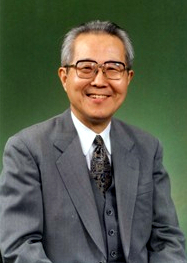Type a search term to find related articles by LIMS subject matter experts gathered from the most trusted and dynamic collaboration tools in the laboratory informatics industry.
Takashi Negishi | |
|---|---|
 Takashi Negishi | |
| Born | April 2, 1933 Tokyo, Japan |
| Academic career | |
| Field | Microeconomics General equilibrium theory History of economic thought |
| Institution | Toyo Eiwa University Aoyama Gakuin University University of Tokyo |
| School or tradition | Neo-Walrasian economics |
| Alma mater | University of Tokyo |
| Influences | Kenneth J. Arrow[1] |
| Awards | Japan Academy Prize (1993) Order of Culture (2014) |
Takashi Negishi (根岸隆, Negishi Takashi, born 2 April 1933) is a Japanese neo-Walrasian economist.
Negishi graduated Faculty of Economics, University of Tokyo in 1956 and received a PhD in Economics from University of Tokyo in 1963.[2]
Negishi's research has provided a wide range of extensions to orthodox general equilibrium modelling. These additions have typically involved imperfect competition, stability and unemployment.[3][4]
Negishi is most famous for Negishi welfare weights or Negishi social welfare function, a system of weighting welfare assessment used in the Kyoto Protocol and other macro-economic analyses. These are controversial insofar as they recognize and embed into economic analysis a varying and unequal price of life across different countries. Elizabeth A. Stanton specifically criticized this approach in Negishi Welfare Weights: The Mathematics of Global Inequality, 2011, arguing in an interview [5] that:
This is argued by Stanton and others to be both inequitable and inaccurate, as over time that "current distribution" would change, making the policy advice even more wrong than it was when it was decided.
Joshua K. Abbott and Eli P. Fenchel[6] acknowledged that
"Negishi weights are often criticized on ethical grounds. [But] We show the Negishi SWF is ethically consistent with the Golden Rule, whereby the social planner weights others’ utilities at a point in time as he would weight his own future discounted utility."
However, the assumptions are still those of the planner and not those whose welfare is planned for. An empirical observation that remains unexplained is why the income distribution observed in 1948 by George F. Kennan, when the US had 50% of world wealth (and presumably income) with 6% of its population,[7] remained so similar to the price of life ratio between developed and developing world as of Kyoto in 1990, at about 15 to 1. However, this could not be blamed easily on Negishi.
{{citation}}: CS1 maint: location missing publisher (link)